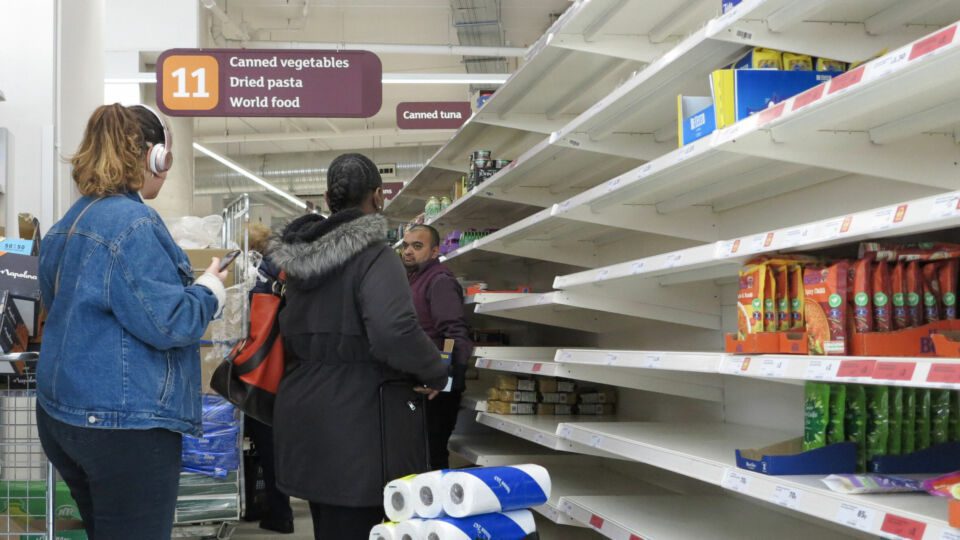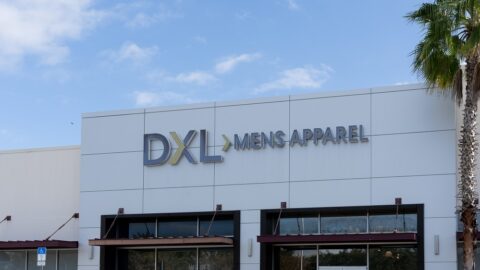Toilet paper. Hand sanitizer. Cleaning products. What do these products all have in common? They were in high demand during the pandemic — and they were virtually impossible to find.
The extreme, rapid shifts in consumer behavior during the pandemic reaffirmed several underlying issues with retailer and CPG brand collaboration. Traditionally, inconsistent data sharing and a lack of full alignment on trends and goals have hindered most demand forecasting processes. But now, as many retailers and brands strive to understand and respond to ever-changing consumer needs, there is a prime opportunity to make improvements.
To fully understand current practices, challenges and opportunities, CI&T conducted qualitative interviews and quantitative surveys with 115 executives at big-box retailers and CPG suppliers. The resulting report, Solving CPG & Demand Forecasting Dilemmas, uncovered four key realities that are creating possible disconnects and issues with demand forecasting:
- Both retailers and suppliers surveyed reported a heavy emphasis on leveraging consumer-level data, including age and gender.
- There is broad skepticism around extremely recent sales data; to many, it seems “too current to be accurate.”
- Suppliers are breaking down their demand forecasts geographically, while retailers are breaking them down by channel.
- Suppliers reported looking at sales data year-over-year, whereas retailers were doing so month-to-month.
“If both parties began looking at a variety of data sets, but through the same lens, there would be much more strategic alignment and much less of a disconnect visible in inventory management,” noted Melissa Minkow, Retail Industry Lead at CI&T in an interview with Retail TouchPoints. Minkow shared additional insights and commentary from her interviews and offered best practices to help retailers better adapt to new forecasting realities.
Retail TouchPoints (RTP): Purchase pattern unpredictability, combined with many suppliers moving to a direct-to-consumer (DTC) model, have brought retailer-CPG partnerships to the forefront. Do you think these two factors have caused this urgency on their own, or is this merely a compounding of other existing issues?
Melissa Minkow: These two would certainly be the most impactful, foundational forces driving the need for a relationship revisit, though there are a few other factors that deserve an honorable mention as well: the rise in grocers embracing marketplace models, the increase in quantity and quality of data both parties could have access to, and the worsening of shipping delays.
RTP: Data sharing is a key recommendation that underlies this report. Why is this such an issue for both parties? Is it just complacency, or a lack of the right processes and tech?
Minkow: It’s definitely a combination. Most of the retailers and suppliers in our interviews and surveys told us they were somewhat satisfied with the data they currently have access to for demand forecasting purposes. However, the stockout rates, excessive waste and eroding margins both parties continue to experience suggest that that satisfaction level is actually complacency. The technology does exist, but the fears surrounding data sharing have impeded processes being enacted, so it’s a mix of both complacency and a lack of process implementation.
RTP: The report notes a need to go beyond consumer data and integrate basket-level data into demand forecasting. Why is this not currently being done? What value can new, alternative data sources add to the process?
Minkow: I think there’s a sense of information overload with all the data potentially available to retailers and suppliers. There’s also been such a strong focus on consumer data for so long that many models don’t work as hard at unpacking the different variables offered within a basket data set. This is a big miss from our perspective in that sales and basket data are so much more closely tied to purchase behaviors. In addition to basket-level data, new, alternative data sets, including trend data and local community events, offer a lot of potential. Plus, with dynamic pricing becoming more mainstream, changes in competitors’ prices are key data as well.
RTP: A big discrepancy between retailers and CPGs is how they go through the demand forecasting process. While CPGs are looking at geography, retailers are largely looking at specific channels. Is this flawed in an omnichannel era? Is one approach more efficient or effective than the others?
Minkow: This is a very complicated problem in an omnichannel era. Now that online and offline inventory are converging due to BOPIS, a more unified channel lens is often more sensible. In addition, a geographical method allows for localized market variables to come into play and for distribution networks to become more sustainable and efficient.
RTP: There was an interesting point in the report regarding the timeliness of data. Specifically, one supplier noted that the reliability of “too recent” data is suspect. Is there some validity in this concern, or is this a way of thinking that needs to be shifted?
Minkow: This insight initially surfaced in an interview with one supplier, but we ended up including the question in our survey because it seemed they could be on to something. Sure enough, the majority of both retailers and suppliers confirmed the hesitancy around considering recent data to be very real. This concern with the accuracy of recent data will have to be mitigated, because the industry is, and should be, moving toward leaner, real-time modeling. Supply chains will become so much more efficient when they’re built on flexible, reactive systems.
RTP: So many CPG brands and suppliers are either testing or investing more in a DTC model, meaning they get to own all customer and sales data. Historically, retailers have held a lot of that data close to the vest. Is there any way to work around this and still build positive relationships with brands?
Minkow: That’s the tricky part. Without a willingness to share data and become more strategic partners, the relationship-building process is an expensive one. Retailers are forced to offer pricing schemes or promotional plans that are sub-optimal for themselves. So it’s really in all parties’ best interests to improve this relationship through data sharing.
RTP: What are some key best practices for retailers that want to improve their demand forecasting and develop a better collaborative process with CPG brands?
Minkow: First and foremost, retailers should determine if they want their relationships to differ with each supplier, and if so, how they want to differentiate those interactions. From there, we recommend meeting with each supplier to establish common objectives, align on what data sets will be shared and mutually agree upon how each data set will be analyzed. The key is that this relationship and the terms will have to be revisited frequently so that adjustments can be made in a timely and reactive fashion. It’s also important to note that the platform for uploading all the data will have to be highly adaptable.













